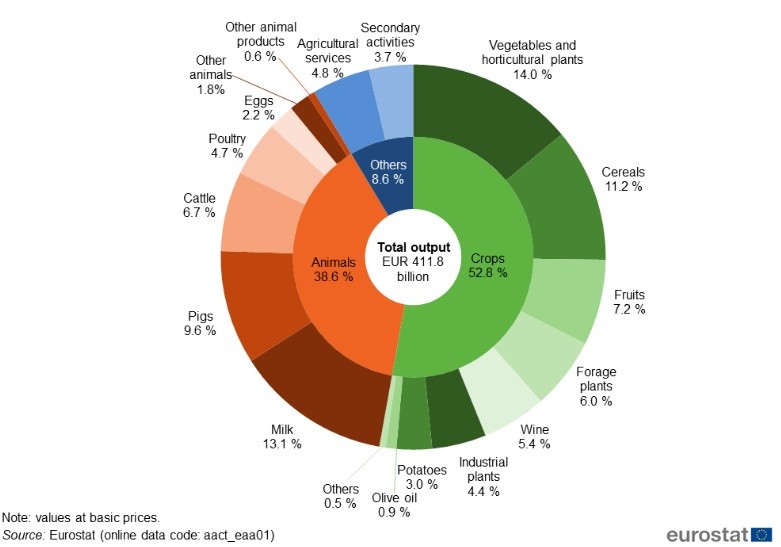Agriculture is attracting fewer and fewer workers, according to Eurostat data for the period 2005-2020. The most significant decline was recorded in Bulgaria, where the labor force in this sector decreased by 8% per year.
We are followed by Slovakia (-5.5% per year), Estonia (-4.9%) and Latvia (-4.5%). Exceptions to this trend are Malta, where agricultural workers increased by an average of 1.5% per year during this period, as well as Ireland (growth of 0.5%).
The reasons for this decrease are mainly two, according to statistics. On the one hand, there is higher mechanization and increased efficiency in agriculture, and on the other – more opportunities and greater attractiveness of other economic sectors.
In 2020, 8.5 million people worked full-time in agriculture, according to Eurostat data. Their number decreased by an average of 2.5% per year in the period 2005-2020. Last year, the decrease was 2.8 percent compared to the previous 2019.
Overall, the contribution of agriculture to the EU’s gross domestic product (GDP) in 2020 is € 171.9 billion, or 1.3% of total GDP. This is roughly equivalent to the GDP of Greece, which is the 16th largest economy in the community.
The added value of the industry in 2020 reaches 177 billion euros, which means that with every euro spent, agriculture creates added value of 0.75 euros. This is a minimal decrease compared to 2019, when value added reached 0.76 euros.
The value of the whole sector is estimated at 411.8 billion euros. This amount includes the value of plantations, animals and services, including from related industries.

The largest agricultural producers in the EU are France (€ 75.4 billion), Germany (€ 56.8 billion), Italy (€ 56.3 billion) and Spain (€ 52.9 billion). Together with the Netherlands, Poland and Romania, they account for just over 76% of the value of total EU agricultural production.
Revenues in agriculture based on hours worked will decrease by 1.5% in 2020, according to Eurostat. The largest decline is among the leading countries in the sector – Germany (-14.6%), Romania (-13.8%) and France (-7.6%). At the opposite pole is Lithuania, where revenues are growing by more than 30 percent. Followed by Croatia (13.2%), Spain (13%) and Hungary (11.6%).
Credit: Deliana Petkova & Desislava Popova

